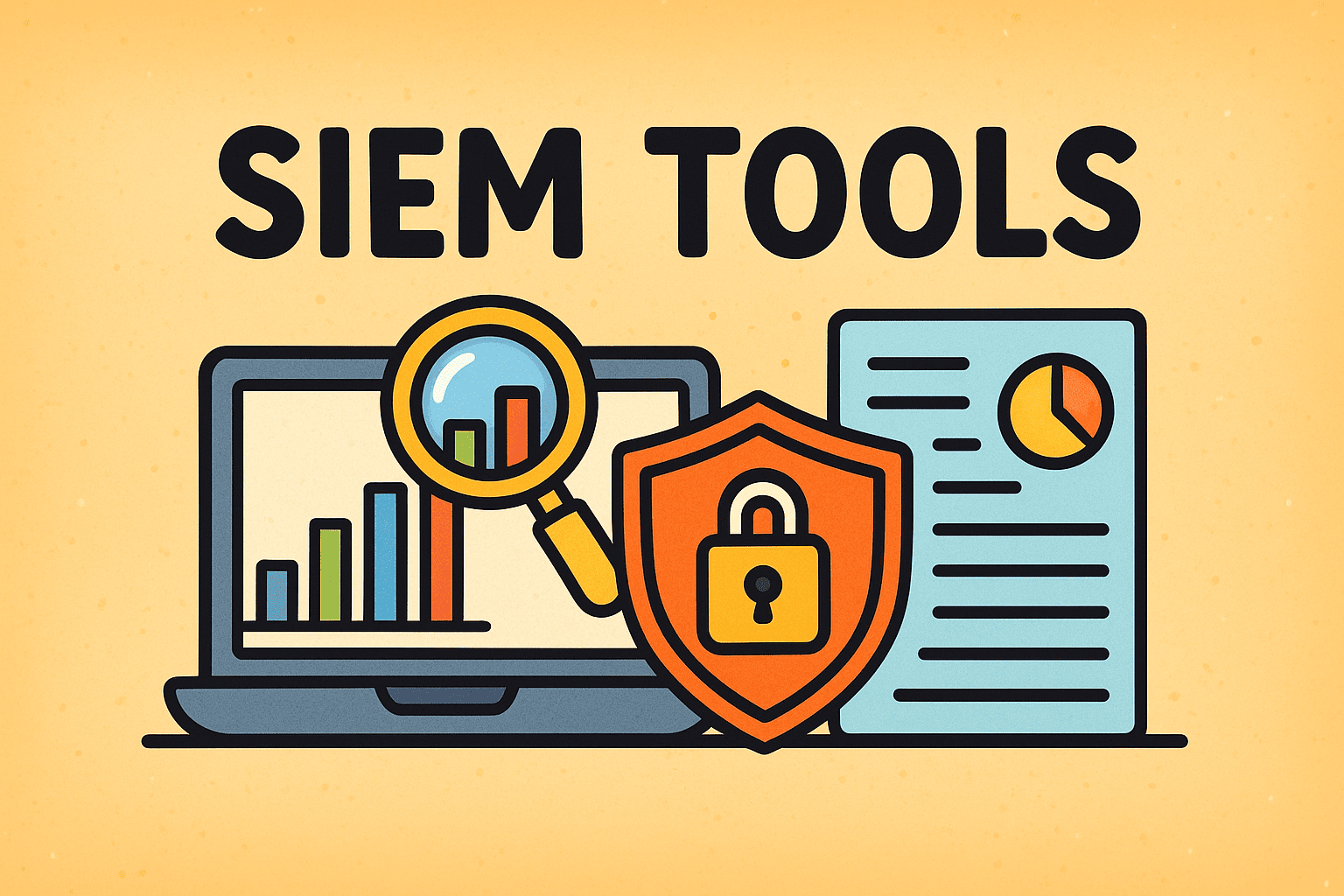Updated on October 8, 2025, by OpenEDR
Did you know the average time to identify a data breach is 204 days? That’s more than six months of undetected cyber risk. For IT managers, cybersecurity professionals, and CEOs, this delay could mean millions in losses and irreparable damage to reputation. This is where SIEM tools step in.
Introduction: Why SIEM Tools Are Essential Today
SIEM (Security Information and Event Management) tools combine real-time monitoring, threat detection, and automated response to give organizations a comprehensive defense against cyber threats. They are the command center for modern cybersecurity operations, offering visibility across networks, endpoints, and cloud environments.
What Are SIEM Tools?
SIEM tools are software solutions that collect, analyze, and correlate log data from various systems in an organization to detect suspicious behavior and security threats.
Key Functions of SIEM Tools:
Log Management: Centralizes logs from firewalls, servers, endpoints, and applications.
Threat Detection: Identifies anomalies using correlation rules and AI.
Incident Response: Automates alerts and remediation steps.
Compliance Reporting: Helps meet regulations like GDPR, HIPAA, and PCI DSS.
Security Analytics: Provides insights into network activity and attack trends.
How Do SIEM Tools Work?
SIEM tools operate by gathering logs from multiple sources and analyzing them to identify patterns of malicious activity.
Data Collection: Pulls logs from endpoints, firewalls, IDS/IPS, and cloud apps.
Normalization: Converts logs into a standard format for easy analysis.
Correlation: Detects suspicious activity by linking related events.
Alerting: Generates notifications for unusual or malicious activity.
Response: Automates actions like blocking IPs or isolating devices.
Reporting: Produces compliance and audit-ready reports.
👉 This workflow ensures IT managers can spot threats in real-time before they escalate.
Benefits of Using SIEM Tools
Implementing SIEM tools offers both security and business advantages.
1. Enhanced Threat Detection
Detects advanced persistent threats (APTs), insider attacks, and zero-day exploits.
2. Regulatory Compliance
Simplifies audit trails for frameworks like SOC 2, ISO 27001, and HIPAA.
3. Centralized Security Management
Provides one unified view for all logs and events across the enterprise.
4. Faster Incident Response
Automates remediation and reduces the mean time to detect (MTTD) and respond (MTTR).
5. Cost Efficiency
Prevents large-scale breaches that could cost millions in damages.
Common Features of SIEM Tools
When evaluating SIEM tools, organizations should look for:
Real-Time Monitoring for instant threat alerts.
User and Entity Behavior Analytics (UEBA) to detect anomalies.
Machine Learning & AI for advanced detection capabilities.
Cloud Integration for hybrid environments.
Threat Intelligence Feeds for up-to-date attack data.
Dashboard Visualization for simplified analysis.
SIEM Tools vs. Traditional Security Tools
| Feature | Traditional Security Tools | SIEM Tools |
|---|---|---|
| Data Coverage | Isolated (single system) | Enterprise-wide log aggregation |
| Threat Detection | Limited | Real-time, correlated detection |
| Incident Response | Manual | Automated and semi-automated |
| Compliance Reporting | Minimal | Comprehensive, audit-ready |
| Visibility | Siloed | Unified, centralized dashboard |
👉 Verdict: SIEM tools are not a replacement, but an integration hub that makes traditional tools stronger.
Challenges of SIEM Tools
While powerful, SIEM tools also come with challenges that businesses must manage:
High Costs: Licensing and infrastructure can be expensive.
Complex Deployment: Requires skilled teams for configuration.
False Positives: Overwhelming alerts can lead to fatigue.
Resource Intensive: Large-scale data collection requires processing power.
To overcome these, organizations should choose SIEM solutions that integrate AI and automation for efficiency.
Popular SIEM Tools in 2025
Splunk Enterprise Security – Advanced analytics and scalability.
IBM QRadar – Strong in compliance and forensic investigations.
ArcSight (Micro Focus) – Great for large enterprises.
LogRhythm – Balanced detection and response capabilities.
Microsoft Sentinel – Cloud-native SIEM with AI integration.
Elastic SIEM – Open-source option with strong flexibility.
Each offers different strengths, so IT managers should match solutions to their budget, size, and compliance needs.
Best Practices for Implementing SIEM Tools
Define Clear Objectives: Focus on compliance, threat detection, or both.
Tune Correlation Rules: Reduce false positives by tailoring alerts.
Integrate Threat Intelligence: Keep SIEM updated with external data.
Conduct Regular Audits: Ensure system logs are complete and accurate.
Train Security Teams: Ensure staff can interpret and act on alerts.
Adopt a Phased Rollout: Start with critical systems before expanding.
The Future of SIEM Tools
As cyberattacks grow in complexity, SIEM tools are evolving:
AI & Automation: Reducing false positives with intelligent filtering.
Cloud-Native SIEMs: Supporting remote work and hybrid IT.
SOAR Integration: Combining SIEM with Security Orchestration, Automation, and Response for faster action.
Zero Trust Models: Tightening monitoring around identity and access.
👉 SIEM tools will remain the central nervous system of cybersecurity, but with smarter, cloud-ready capabilities.
FAQs: SIEM Tools
1. What does SIEM stand for?
SIEM stands for Security Information and Event Management.
2. Are SIEM tools only for large enterprises?
No. Cloud-native and open-source SIEM tools now make them accessible for small and mid-sized businesses.
3. How do SIEM tools differ from SOAR tools?
SIEM detects and analyzes threats, while SOAR focuses on automating the response.
4. Can SIEM tools prevent cyberattacks?
They don’t prevent attacks directly but detect them quickly to minimize damage.
5. What industries benefit most from SIEM tools?
Finance, healthcare, retail, and government—all sectors handling sensitive data.
Conclusion: Strengthen Your Cybersecurity with SIEM Tools
A strong cybersecurity strategy is incomplete without SIEM tools. They offer real-time visibility, faster incident response, and compliance support, making them indispensable for IT managers, CEOs, and cybersecurity leaders.
Cybercriminals are more sophisticated than ever, but with the right SIEM solution, you gain the advantage of proactive defense.
👉 Take the first step toward securing your organization: Register Here
